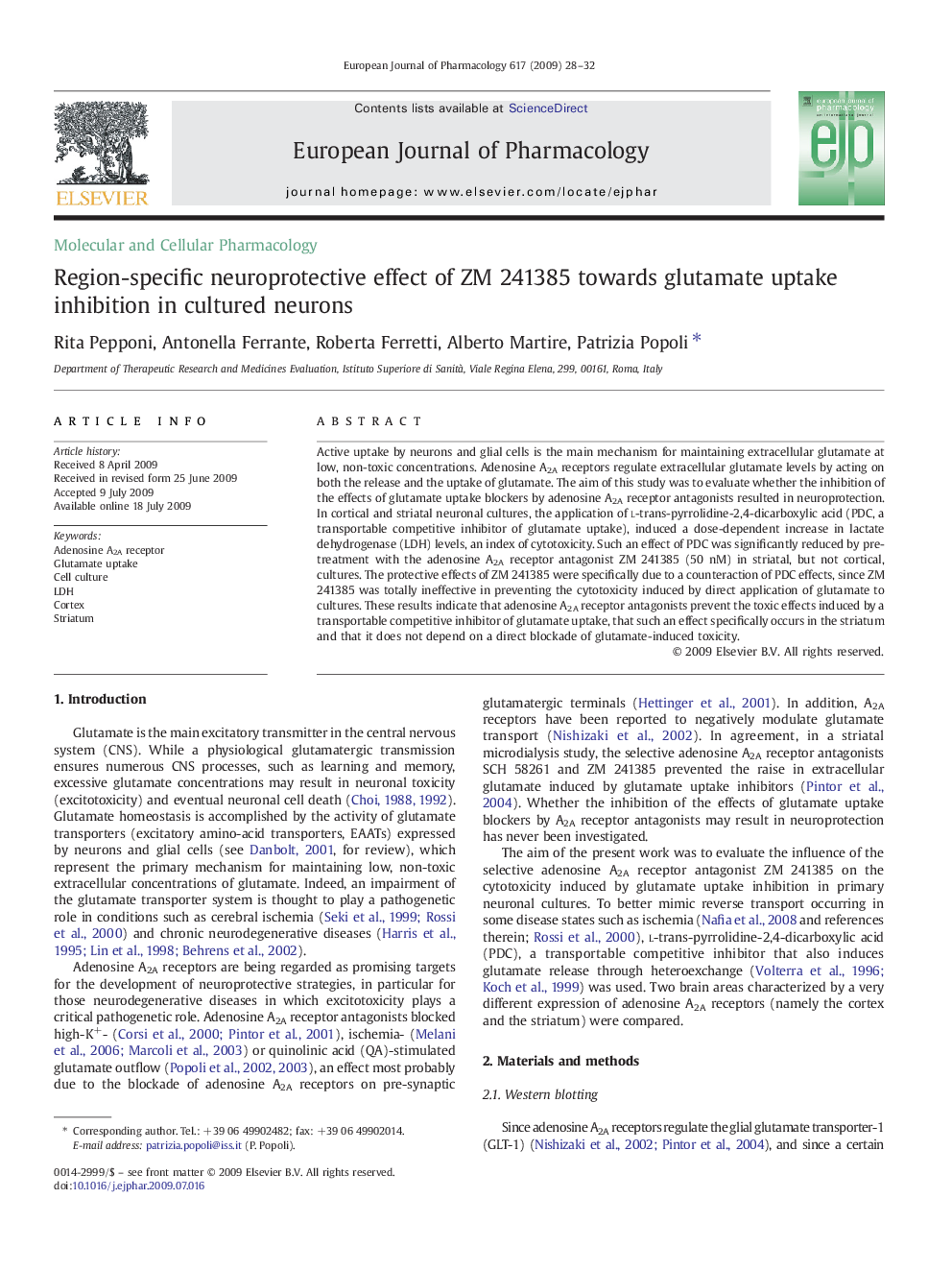| Article ID | Journal | Published Year | Pages | File Type |
|---|---|---|---|---|
| 2534068 | European Journal of Pharmacology | 2009 | 5 Pages |
Active uptake by neurons and glial cells is the main mechanism for maintaining extracellular glutamate at low, non-toxic concentrations. Adenosine A2A receptors regulate extracellular glutamate levels by acting on both the release and the uptake of glutamate. The aim of this study was to evaluate whether the inhibition of the effects of glutamate uptake blockers by adenosine A2A receptor antagonists resulted in neuroprotection. In cortical and striatal neuronal cultures, the application of l-trans-pyrrolidine-2,4-dicarboxylic acid (PDC, a transportable competitive inhibitor of glutamate uptake), induced a dose-dependent increase in lactate dehydrogenase (LDH) levels, an index of cytotoxicity. Such an effect of PDC was significantly reduced by pre-treatment with the adenosine A2A receptor antagonist ZM 241385 (50 nM) in striatal, but not cortical, cultures. The protective effects of ZM 241385 were specifically due to a counteraction of PDC effects, since ZM 241385 was totally ineffective in preventing the cytotoxicity induced by direct application of glutamate to cultures. These results indicate that adenosine A2A receptor antagonists prevent the toxic effects induced by a transportable competitive inhibitor of glutamate uptake, that such an effect specifically occurs in the striatum and that it does not depend on a direct blockade of glutamate-induced toxicity.
